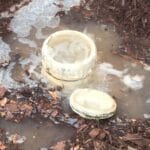Choosing the right sand can make a world of difference, especially when you’re trying to create the perfect play area or maintain a pristine pool. Have you ever found yourself standing in the store aisle, staring at bags labeled “play sand” and “pool sand,” wondering which one to pick?
You’re not alone. Each type of sand serves a distinct purpose, and selecting the wrong one could lead to unnecessary frustration and cost. You’ll discover the key differences between play sand and pool sand, helping you make the best decision for your needs.
Get ready to uncover the secrets behind these seemingly similar sands and find out which one will work best for you. Let’s dive into the details that will transform your sandy dilemma into a smooth and informed choice.
Composition And Texture
Sand is versatile. Different types have different uses. Play sand and pool sand serve distinct purposes. Understanding their composition and texture is key. Each type of sand offers unique benefits. Dive deeper into their characteristics.
Composition Of Play Sand
Play sand is fine and smooth. It is often made from quartz. This sand is washed and sifted. Impurities are removed. Play sand is safe for children. It is free from harmful materials. Its composition makes it ideal for sandboxes.
Texture Of Play Sand
The texture of play sand is soft. It feels gentle to the touch. Children enjoy playing with it. This sand is moldable. Its fine grains hold shape well. Perfect for building castles. Clean and non-abrasive.
Composition Of Pool Sand
Pool sand is coarse. It is made from silica. This sand is heavier. It filters impurities from water. Pool sand is crucial for pool cleanliness. Its composition ensures effective filtration.
Texture Of Pool Sand
Pool sand feels rough. Its coarse grains aid filtration. These grains trap debris in pools. The texture is not suitable for playing. Pool sand is designed for cleaning, not play. Effective yet practical.
Safety Considerations
Choosing the right sand for your needs requires careful thought. Safety is a crucial factor. Whether you’re considering play sand or pool sand, understanding their safety aspects is vital. Each type has its unique properties that influence safety.
Play Sand Safety
Play sand is designed for children’s use. It undergoes thorough cleaning processes. Manufacturers ensure it is free from harmful substances. This sand is often washed and sterilized. It reduces risks associated with impurities. The grains are smooth and round, minimizing injury risks. It’s essential for play environments where safety is paramount.
Pool Sand Safety
Pool sand serves a different purpose. It is used in filtering systems. This sand is coarser than play sand. Its texture aids in trapping particles. Pool sand is not designed for direct contact. It’s important to keep it away from skin and eyes. Ensuring proper storage and handling is key. It helps maintain safety standards around pools.
Both sands have environmental considerations. Play sand often comes from natural sources. It undergoes processing to ensure purity. Pool sand’s extraction process may vary. Sustainable sourcing is crucial for both. It reduces environmental footprint and promotes safety. Choosing eco-friendly options supports overall well-being.
Usage And Applications
When you’re deciding between play sand and pool sand, understanding their specific uses and applications can guide your choice. Each type of sand serves unique purposes, and knowing how they differ can save you time, money, and effort. Let’s explore how these sands are typically used and see which one fits your needs best.
Usage Of Play Sand
Play sand is a favorite for children’s play areas due to its soft texture. It’s safe for little hands, making it perfect for sandboxes and playgrounds. Parents often choose play sand because it’s easy to mold into castles and shapes, sparking creativity in kids.
In gardening, play sand can improve soil drainage. Adding it to clay-heavy soil can help your plants thrive by preventing waterlogging. Have you ever considered using it for indoor plants too?
Applications Of Pool Sand
Pool sand is essential for filtering impurities in swimming pools. Its coarse texture is perfect for trapping dirt and debris, keeping your pool water crystal clear. Regular maintenance with pool sand ensures a clean and safe swimming environment.
Beyond pools, this sand is also used in water filtration systems. Its ability to filter out contaminants makes it valuable for both residential and industrial settings. Consider the difference it could make in your own water filtration system at home.
Choosing The Right Sand For Your Needs
Think about your specific requirements before making a decision. Are you looking to enhance your garden, create a fun play area, or maintain a pool? Understanding the primary use will help you make the right choice.
Always buy from a reputable supplier to ensure quality. Whether it’s for play or filtration, quality matters. Have you checked the reviews and recommendations before purchasing?
By knowing how play sand and pool sand differ in their usage and applications, you can make an informed choice that suits your needs. What project are you planning next?

Credit: www.reddit.com
Cost And Availability
Choosing the right sand for your project involves more than quality. Cost and availability play crucial roles in decision-making. Understanding these aspects helps in selecting the perfect sand type.
Cost Of Play Sand
Play sand is generally affordable. It’s designed for children’s play areas. The price reflects its widespread use. Bulk buying reduces costs significantly. Retail stores offer competitive prices. Online shopping provides various deals.
Cost Of Pool Sand
Pool sand is slightly more expensive. It’s used for specific filtration purposes. Its quality standards affect the price. Costs can vary by brand. Bulk purchases may offer discounts. Specialized stores often sell pool sand.
Availability Of Play Sand
Play sand is widely available. Most home improvement stores stock it. It’s easy to find in gardening centers. Online platforms offer extensive options. Seasonal sales increase availability. Local retailers often carry it.
Availability Of Pool Sand
Pool sand is less common. Specialized stores primarily stock it. Availability may vary by location. Online retailers offer diverse choices. Limited local options can affect accessibility. Specific stores meet pool sand needs.
Maintenance And Longevity
Understanding maintenance and longevity is crucial when choosing between play sand and pool sand. Both types of sand serve different purposes and have distinct characteristics. Proper care extends their usability, ensuring you get the most out of your purchase. Let’s delve into the specifics of maintaining each type of sand and how long they typically last.
Maintenance Of Play Sand
Play sand requires regular attention to ensure a safe play area. Keep the sand clean by sifting out debris weekly. Cover the sandbox when not in use to prevent contamination from animals and weather. Rake the sand often to maintain softness and prevent compacting. Replace the sand annually or sooner if it appears dirty.
Maintenance Of Pool Sand
Pool sand needs less frequent maintenance but is equally important. Backwash the pool filter every few weeks to remove impurities. Inspect the sand annually for signs of clumping or wear. Replace the sand every three to five years to maintain effective filtration. Clean the filter housing regularly to prevent blockages.
Longevity Of Play Sand
Play sand typically lasts one year with regular maintenance. Its longevity depends on environmental factors and frequency of use. Frequent replacement ensures a clean and safe environment for children. Signs of wear include discoloration and odor.
Longevity Of Pool Sand
Pool sand can last three to five years with proper care. Its lifespan depends on pool usage and water quality. Regular maintenance helps extend its effectiveness. If water flow decreases, consider replacing the sand sooner.
Credit: www.fishlore.com
Environmental Impact
Choosing between play sand and pool sand affects the environment differently. Play sand often requires more processing, increasing energy consumption. Pool sand typically involves less refinement, reducing its environmental footprint.
When choosing between play sand and pool sand, considering their environmental impact is crucial. Both types of sand are used in large quantities, affecting our planet in different ways. It’s essential to understand these differences to make an informed decision that aligns with your eco-friendly values.Extraction Process
Play sand is often mined from natural sources, which can disrupt ecosystems. The extraction process may lead to habitat destruction for plants and animals. On the other hand, pool sand is typically sourced from industrial sand mining, which can also pose environmental challenges, such as air and water pollution.Transportation Emissions
The environmental footprint of sand extends beyond its extraction. Consider the emissions from transporting sand to retail locations. Local sourcing of play sand can reduce transportation emissions, making it a greener choice. Pool sand, however, might be shipped over longer distances, increasing its carbon footprint.Decomposition And Waste
While sand does not decompose like organic materials, its disposal still matters. Excessive use of play sand can lead to waste that fills landfills unnecessarily. Pool sand, when replaced, should be disposed of responsibly to avoid environmental harm. Have you thought about where all the sand goes after its use?Impact On Water Bodies
Runoff from areas using play sand can potentially affect nearby water bodies, altering their ecosystems. Pool sand, used in filtration systems, may end up back in water systems, needing careful management to avoid contamination. Are you considering how your choice might affect local rivers or lakes?Reusability And Recycling
Play sand can be reused for various projects, such as landscaping or crafts, reducing its environmental impact. Pool sand, once used, might not be as versatile, but exploring recycling options can minimize waste. How can you creatively repurpose your sand to benefit the environment? Understanding these aspects helps you make a more sustainable choice. Next time you pick up a bag of sand, consider its journey and its impact. Your choices matter, not just for your backyard but for the planet too.Choosing The Right Sand
Choosing the right sand depends on its intended use. Play sand and pool sand serve different purposes. Understanding these differences helps make informed decisions.
Understanding Play Sand
Play sand is soft and fine. It is ideal for children’s play areas. This type of sand is washed and screened. It ensures safety from contaminants and sharp particles.
Understanding Pool Sand
Pool sand is coarser and more durable. It is used in pool filters. This sand effectively traps dirt and debris. It keeps pool water clean and clear.
Texture Differences
Play sand feels smooth to the touch. It is perfect for building sandcastles. Pool sand is rougher. Its grainy texture aids filtration.
Play sand is non-toxic. It is safe for children to handle. Pool sand may contain silica. It is not suitable for play areas.
Cost Comparison
Play sand is usually cheaper. It is sold in large bags. Pool sand is more costly. Its specialized use justifies the price.
Application And Usage
Use play sand for sandboxes and playgrounds. It is great for sensory play. Pool sand is best for pool maintenance. It enhances water clarity.
Choosing Based On Purpose
Consider the sand’s purpose before buying. Play sand is ideal for fun and creativity. Pool sand works for cleanliness and filtration.
Credit: www.plantedtank.net
Frequently Asked Questions
What Is The Difference Between Play Sand And Pool Sand?
Play sand is softer and finer. Pool sand is coarser for filtration. Both serve specific purposes.
Can I Use Pool Sand As Play Sand?
Pool sand is not recommended for play areas. Its coarse texture can be uncomfortable for children.
Is Play Sand Safe For Children To Use?
Yes, play sand is safe. It’s specially processed to be non-toxic and suitable for play activities.
How Often Should Pool Sand Be Replaced?
Pool sand usually lasts 3-5 years. Regular maintenance ensures efficient filtration and water quality.
Which Type Of Sand Is Cheaper?
Play sand is generally cheaper than pool sand. Costs may vary based on location and suppliers.
Conclusion
Choosing between play sand and pool sand depends on your needs. Play sand is soft and safe for kids. Ideal for sandboxes and play areas. Pool sand is coarser and filters water well. Perfect for pool filtration systems. Consider your purpose and environment.
Think about safety and functionality. Each type serves unique roles. Always prioritize safety and quality. Check labels and sources before buying. Both sands offer specific benefits. Make informed decisions to suit your project. Enjoy the results of your choice.





